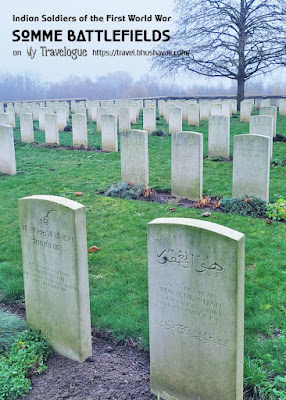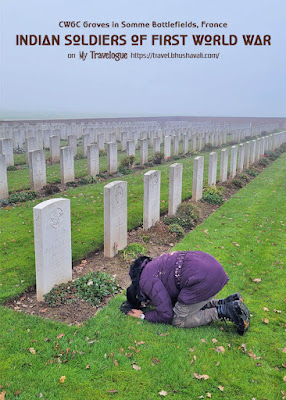Visiting the graves of the forgotten Indian Soldiers of the First World War in Somme, France
After visiting all the Indian War graves & memorials in Belgium, I
decided to head to France…
War Graves in the region and there were so so so many! Finally, I ended up
extending my trip by one more day and dedicated a day to visiting as many
cemeteries and graves as possible within that 1 day. However, I reached
Amiens by 12:30PM, and being winter, by 5:30PM it was dark! In the 5 hours (half-day),
I managed to visit 7 cemeteries and 1 memorial.
Corbie Communal Cemetery
La Chapelette British and Indian Cemetery. Photo by Mr.Sylvestre Bresson
WHY DID THE INDIANS FIGHT IN THE FIRST WORLD WAR?
To give you a gist – Austria’s crown prince Archduke Ferdinand was killed by
Serbian nationalists. Austria wages war on Serbia. Serbia befriends Germany,
here on called Axis. Austria befriends Russia & France, here on called
Allies. Britain joins the Allies. India was a British Colony and they
deputed Indian soldiers & laborers to Europe!
UNESCO WORLD HERITAGE SITES IN FRANCE & BELGIUM – FUNERARY AND MEMORY SITES OF THE FIRST WORLD WAR
In 2023, 139 World War I sites in France & Belgium, have been included together, as the Funerary and Memory Sites of the First World War under UNESCO. Many of these cemeteries have been included in the list of 139 sites.
WHAT IS THE BATTLE OF SOMME?
ROLE OF INDIAN SOLDIERS IN THE BATTLE OF SOMME:
Indian Soldiers majorly fought on the front line in the Battles of Ypres.
After that, the Indian Infantry troops (foot soldiers) were sent to other
regions, but the Indian Cavalry troops (horseback soldiers) were stationed
in many places in France. After the Battles of Ypres, the Battle of Somme
(France) happened, from the mid to the end of 1916.
During the Battle of Somme, Indian Cavalry troops were deployed in the Somme
region. The frontline is usually Infantry soldiers which didn’t have
Indians. The Indian Cavalry soldiers were kept as a backup if the Germans
managed to break through the front line which somehow never happened, but
the front line did suffer severely making this one of the bloodiest battles
of mankind.
That said, there were certain specific attacks that happened time &
again, on the Cavalry troops when Indian soldiers died. Also, Indians also
served as drivers to the British Infantry troops on the front line, who also
took the hit.
Bronfay Farm Military Cemetery
Bray Military Cemetery
INDIAN LABOUR CORPS DURING WWI
While the Indian Infantry troops were almost not involved and Indian
Cavalry troops were involved to some extent during the Battle of Somme,
the Indian Labour Corps was extensively involved here. Indian Labour Corps
were not armed soldiers but were semi-skilled or unskilled men who had to
do a variety of odd jobs.
Indian Labour Corps was formed in 1915 and a mass enrolment drive happened
in India. It began first with the Gallopolli Campaign (today’s Turkey). By
1917, a humongous, 48000 laborers were deputed to France! As the war kept
going on, more people were needed. Soon, prisoners were deputed as
laborers (not all prisoners were criminals & revolutionists at this point in time. Read about the Criminal Tribes Act to know the British atrocity of labeling people as criminals by birth!)! The tribal leaders of every tribe from the North Eastern
Frontier Region were ordered to send a certain number of people! That’s a
reason, why several Naga tribes were a part of ILC. Even the various
Christian Missionaries were told to mobilize people to join the Labour
Corps, which is why there are many many more Christian laborers and very
few Christian soldiers.
The job of the laborers of the Indian Labour Corps during WWI, varied from
fixing the trenches, recycling timber, railroad works, building works,
battlefield clearance, etc.
So, when you see the headstones of the Indian War Graves in Somme, it
would either be a soldier of the Cavalry troops, a driver with the
Infantry troops, or a laborer.
HEADSTONES OF IDENTIFIED INDIAN SOLDIERS IN FRANCE
In my earlier article, I mentioned that the headstones of Indian War Graves are of 3 types (apart from the unknown soldiers) – one each for
Hindus, Muslims, and Sikhs.
However, it was here in France, that I came to know that it is in fact 6
types – 3 more – for Christians, Buddhists, and Tribes (who were mostly
laborers & not combat soldiers)!
These Christians are truly Indians as opposed to the Lieutenants &
Captains of the British Indian Army who are also listed as Indians,
though they were actually British. However, as I mentioned in my earlier article, I suspect that the common religion of the entire unit is mentioned on the headstones and not the personal religion followed by the individual.
BUDDHIST HEADSTONES in Sinhalese (Srilankan)
language: අනිච්චා වත සංඛාරා – Aniccā vata saṅkhārā – Impermanent, alas, are all formations! – There’s also an image of
a Burmese-styled Buddhist temple
CHRISTIAN HEADSTONES in the Latin language: Labor Omnia Vincit –
Work Conquers All! – There’s also a cross just like the Christian burials
of other nationalities
TRIBAL HEADSTONES – Since there were many Indian laborers from
tribal regions who followed tribal religions, their headstones merely
stated the name of the tribe.
La Chapelette British and Indian Cemetery
London Cemetery and Extension Longueval in heavy fog & zero visibility
REMEMBRANCE TOURISM IN SOMME FOR INDIANS – SHOULD YOU VISIT THE INDIAN
WAR GRAVES?
If you’re an Indian reading this, your emotions may be all over the place. (If you’re a non-Indian reading this, here’s your context – Britain was India’s colonizer).
Should you or shouldn’t you visit these graves of the Indian soldiers of WWI? Before deciding, let’s talk about 2 facts and 2 opinions…
-
Both the World Wars happened (1914-18 & 1939-44) before Indian
Independence & India-Pakistan Partition (1947). Since the soldiers
& laborers from India were technically from the colonized British
India (which includes today’s India, Pakistan, Bangladesh, Srilanka,
etc), we don’t know what each and every individual wanted – whether to
join India or Pakistan post-partition. They hadn’t even known that
India-Pakistan Partition would happen when they died in this war so far
away! -
Helping the British during the World War was something that was
supported by our own national leaders. Our colonizers, the British
promised our leaders Purna Swaraj (total independence) if we helped them
in the war. Gandhiji himself promoted and mobilized Indians to join the
troops. Unfortunately, the promise was broken and this took a turn to
the worst, after the war. Both Jallianwala Bagh Massacre
(1919) &
Rowlatt Act
(1919) happened after the First World War (1914-18). -
While it is one way to look at these soldiers as people who fought
‘with’ the British instead of against them, here’s another point of
view: In this time period, pre-Independence unless a person was a
krantikari, a revolutionist, there is every other chance that they were
serving & paid by the British Empire because that was literally the
functioning Indian government at that point in time! If our own (great)
grandparents were in civil services like postal services or railways or
school teachers, they were paid their salaries by the British Empire!
These soldiers were no different. They were also civil servants who were
paid by British Empire. Instead of looking at them as people who fought
‘with’ the British, I choose to look at it as yet another evil outcome
of colonization. Without colonization, without the soldiers &
laborers from India, Africa, Australia, etc, the war would have been a
European war & not a World War! Without colonization, none of this
would have happened! -
Why didn’t these soldiers leave the job & become a krantikari? Just
like how many among us may be in jobs that we don’t really like because
we need money to live and we have a family to take care of, they too had
aging parents, wives, children, etc., and this was their only source of
income! Many didn’t want to be in this freezing weather, so far away
from home, fighting a war, but they had to! Also, many did give it all up and joined Gandhiji or Bose to fight
against the British, and with their ultimate sacrifice, they gave us
our freedom from the British Empire. Again, without colonization, none of this would have happened!
I see these fallen Indian soldiers & laborers of World Wars as victims
of colonization and they were killed by colonization. If you choose to disagree with me, let’s just agree to
disagree & move on…
VIDEO TOUR OF THE CEMETERIES WITH INDIAN WAR GRAVES IN SOMME, FRANCE
INDIAN WAR GRAVES IN SOMME, FRANCE
SAINT PIERRE CEMETERY, AMIENS
The first stop was, of course, Saint Pierre Cemetery on the outskirts of
Amiens city itself. The CWGC cemetery within St.Pierre Cemetery has 749
identified graves of which 1 is of an Indian – Baru, a driver with
Royal Artillery Depot Jabalpur. It is easy to reach here by public
transport from Amiens city center.
How to reach Saint Pierre Cemetery, Amiens: Ametis bus route L stops at Marivaux from where Saint Pierre cemetery is just a 3-min
walk.
DAOURS COMMUNAL CEMETERY EXTENSION
My next stop was Daours Communal Cemetery. At the end of the cemetery, in a
dedicated section, there are the 8 graves of Indian soldiers –
Jehangir Khan, Ram Sarup, Ghulam Mohi-u-din, Syed Mir, Ali Akbar Khan,
Nand Singh, Arjan Singh, and Narain Singh. They were all in the Cavalry units and were either
Daffadar or Lance Daffadar or Sowar in various regiments.
Cavalry Charge in Highwood, Somme: As I mentioned above, Indian
soldiers were majorly in the Cavalry units after the Ypres Battles. On July
14, 1916, the Bois des Fourcaux area (translated to English as High Wood)
was undefended for a considerable amount of time, after an earlier battle.
This was literally a wooded area which means it was filled with trees and
there were areas where the ground was muddy which made defense pretty
difficult. The fight between the British (incl. Indians) & Germans to
gain control over High Wood, went on from July 14 to Sept 15, 1916.
It was at this Cavalry Charge that the 2nd Indian Cavalry Division was a
part of the British troops. The Indian soldiers buried in the Daours
Communal Cemetery most probably died in this attack or were wounded in the
attack & died later. The date of death of the soldiers here varies from
July 18, 1916, to Sept 16, 1916.
How to reach Daours Communal Cemetery Extension: Daours Communal Cemetery Extension is located 1.5km (18 mins walk) from
Daours Railway Station. It is possible to carry a bike on the train. This
is a small town and there is no bus/tram here. So this 1.5km has to be
walked/biked.
CORBIE COMMUNAL CEMETERY
Just like the Indian soldiers buried in Daours Communal Cemetery, Corbie
communal cemetery too has the graves of 4 of the Indian soldiers who died in
the Cavalry Charge in Highwood. They are
Mehar Khan, Nand Singh, and Saidhan Shah who were Sowars, and
Lall Khan, who was a Lance Daffadar in various Indian Cavalry
regiments. All of them were from the Punjab region (both India &
Pakistan) & all of them died between the 6th to 17th Sept 1915.
How to reach Corbie Communal Cemetery: Corbie Communal Cemetery is located 1.9km (25 mins walk) from Corbie
Railway Station. It is possible to carry a bike on the train. This is a
small town and there is no bus/tram here. So this 1.9km has to be
walked/biked.
Gif (4 images change every 3 secs) – Indian War graves in Corbie Communal Cemetery
BRAY MILITARY CEMETERY
Bray Military Cemetery has the graves of 12 Indians of whom 3 are Indian
Soldiers (Cavalry troops) and the rest are laborers. The 3 soldiers are
Buta Khan (Sowar), Muhammad Khan (Daffadar), and
Lal Din (Driver). The rest are all
laborers from U.P and Manipur. You can find the list of names &
details below.
How to reach Bray Military Cemetery: Bray Military Cemetery is located on the outskirts of the town
Bray-sur-Somme. The CAP bus route 738 which connects Albert and
Peronne goes via Bray-sur-Somme. The Bray-sur-Somme bus stop is about
1km (12 mins walk) from Bray Military Cemetary.
Gif (12 images change every 3 secs) – Indian War graves in Bray Military Cemetery
BRONFAY FARM MILITARY CEMETERY
Bronfay Farm Military Cemetery has 2 graves of Indian soldiers – Narinjan Singh and Sher Singh, both Sowar with different Indian Cavalry troops. Right opposite the Bronfay Farm Military cemetery is the Bronfay Farm which served as the make-shift hospital when the war was happening. The soldiers who died due to war wounds in this hospital were buried (or cremated & ashes buried) in the Bronfay Farm Military Cemetery. It is very possible that the 2 Indian soldiers here died due to war wounds at this hospital. The farm is still a functional farm and is a private property that cannot be visited.
How to reach Bronfay Farm Military Cemetery: Bronfay Farm Military Cemetery is located 3km from Bray Military Cemetery mentioned above.
Gif (2 images change every 3 secs) – Indian War graves in Bronfay Farm Military Cemetery
LA CHAPELETTE BRITISH & INDIAN CEMETERY
Unlike the other cemeteries, the La Chapelette British & Indian Cemetery
is almost entirely dedicated to the Indian Labour Corps. The whole Cemetery
is in 2 sections – British & Indian. There are
315 Indian War Graves in La Chapelette British & Indian Cemetery
of which 32 are Indian Soldiers (Cavalry troops) and the rest
283 are Indian laborers! You can find the list of names & details
below.
As I mentioned earlier, it is possible to see the headstones of the laborers
which are not only Hindus, Muslims & Sikhs but also Indian Christians,
Buddhists, and Tribes. La Chapelette British & Indian Cemetery is the
cemetery with the most number of Indian War Graves of WWI in the Somme
Region in France. La Chapelette British & Indian Cemetery is the largest
CWGC Cemetery for Indians.
As always, it should be remembered that British India means, this also
includes people not only from present-day India but also Pakistan,
Bangladesh, Srilanka, Burma, etc as well as the princely state of Manipur! I
was quite confused with the Buddhist headstones. At first, I thought the
script was Burmese because quite a few headstones were of the Burmese
regiment and there was an image of a Burmese temple! However, further
digging revealed that the script was actually Sinhalese (Srilankan)!
There were many, many headstones of Tribal communities that mentioned
Khasi (Assam, Meghalaya), Naga (Nagaland),
Kumaon (Uttarakhand, UP), Bihari, Burman, Santhal (Jharkhand,
Bengal), Garo (Assam, Meghalaya, Nagaland, etc),
Oraon (Jharkhand, Bengal, Odisha), etc. I’ve tried to photograph at least one headstone of each tribe in the 2nd Gif image below.
How to reach La Chapelette British & Indian Cemetery: The nearest railway station is TGV Haute Picardie which is 11km away.
The nearest major city railway station is Albert which is 28km away.
If you don’t have a car, take the bike on the train.
Gif (4 images change every 3 secs) – 4 of the 32 Indian War graves of Soldiers in La Chapelette British & Indian Cemetery
Gif (12 images change every 3 secs) – 12 of the 283 Indian graves of Labourers in La Chapelette British & Indian Cemetery
LONDON CEMETERY & EXTENSION LONGUEVAL (HIGH WOOD (BOIS DES FOURCAUX))
London Cemetery & Extension is along the border of High Wood (Bois des
Fourcaux) which I mentioned in the Daours Communal Cemetery section earlier
where the Cavalry Charge happened.
It was about 5:00PM when I was at London Cemetery & Extension. Since it
was December it was not only getting darker, but the day was incredibly
foggy. The visibility was zero! When I entered the cemetery, the other end
of the cemetery was not visible. London Cemetery and Extension is surrounded
by cultivation lands and fields and I couldn’t see anything at all! Even if
I went to the edge of the cemetery, the cultivation lands were invisible. I
could only see the hazy white and nothing else. I was a bit scared. I was
worried that, if an animal (dog? fox?) might come through the fog and I
wouldn’t know what to do?!
That suddenly made me realize something – when the war was happening, during
the winters, when it was so foggy, imagine being suddenly ambushed by 100
enemy soldiers, who suddenly appear in front of you through the thick fog!!!
London Cemetery and Extension has 914 graves of which 2 are of Indian
Soldiers – Driver E.A.D.Kamal (who was with Royal Indian Artillery. Technically an Infantry troop, but
Indian soldiers mostly didn’t serve in the Somme region as Infantry except
for drivers, as mentioned earlier)
and Jemadar Ganesha Singh (of Cavalry troops).
How to reach London Cemetery and Extension, Longueval: London Cemetery and Extension Longueval is about 13km from Albert (Gare
d’Albert Railway Station). Though there is a bus that connects Albert and
Longueval, it is meant for school students and the timings are impractical
for others. It would be a good idea to hire a car or take a bike on the
train.
Gif (2 images change every 3 secs) – Indian War graves in London Cemetery and Extension Longueval
DERNANCOURT COMMUNAL CEMETERY EXTENSION
By 5:30PM it was too dark to have any visibility and our last stop for the
day was Dernancourt Communal Cemetery Extension. There are 6 Indian war
graves in Dernancourt of which 1 is of a soldier –
Sirdar Lal Khan (Lance Daffadar), and the rest 5 are laborers –
Lukas Mundo, Baldeo, Chauki, Santosh Salkar, and
Patras Soy. We literally had to use torches to find these graves, it
was already that dark.
INDIAN MEMORIAL AT LONGUEVAL
While I had the map of the graves of Indians, I didn’t know of the Indian
monument in Longueval. Thanks to Mr.Sylvestre of Terres de Memoires who
knew this place and took me there. It is a small memorial that depicts 4
Indian soldiers – 3 Infantry and 1 Cavalry. This bronze sculpture was
inaugurated in 2019. It is in the same plot which also has the memorial for
New Zealand soldiers of WWI.
How to reach Indian Memorial in Longueval: It is located just about 2km
from London Cemetery and Extension Longueval
Photo by Mr.Sylvestre Bresson
MAP OF THE CEMETERIES WITH GRAVES OF INDIAN SOLDIERS OF THE WORLD WARS IN FRANCE
HOW TO VISIT THE INDIAN WAR GRAVES IN SOMME?
The best way to visit the Somme cemeteries would be by car. There are a couple of places which can be visited by public transport. For eg., if you’re visiting Amiens, you could choose to also visit St.Pierre Cemetery by taking the bus or visit Daours & Corbie by taking the train; if you’re visiting Albert, you could choose to hire a bike and visit all the cemeteries around Albert.
However, for a more efficient trip, the best option would be by car. If you can drive, hire a car, and if you cannot or choose not to, hire a chauffeured car. On my day of Remembrance tourism in Somme, I was taken around by Mr.Sylvestre of Terres de Memoires.
Terre de Memoires e-mail: [email protected]
Terre de Memoires phone number: +33(0)3 22 84 23 05
HOW MANY DAYS DO YOU NEED FOR REMEMBRANCE TOURISM IN SOMME FOR
INDIANS?
Ideally 2.5 to 3 days!
Day 1 – 12 Cemeteries in and around Amiens, Flixecourt, Abbeville and
Doulens.
Day 2 – 11 Cemeteries in and around Albert
Day 3 – (might take only half a day) – 5 Cemeteries in and around Peronne.
Maybe combine it with the Museum of the Great War in Peronne.
SPECIAL THANKS TO
Dr. Domineek Dendooven, Author of Asia in Flanders Fields
Mr. Sylvestre Bresson, Terre des Memoires Battlefield Tours
Dr. Radhika Sinha, 1914-1918 Online Encyclopedia
and of course, Hauts-de-France Tourisme, Somme Tourisme & Amiens Tourisme
BOOKMARK IT / PIN IT NOW & READ LATER


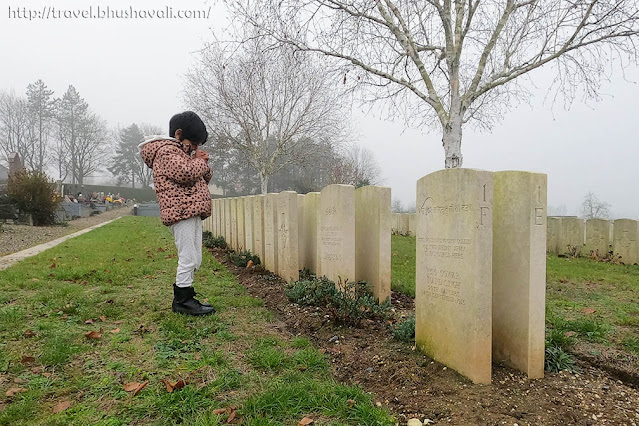
.jpg)
.jpg)
.jpg)
.jpg)
.jpg)
.jpg)
.jpg)
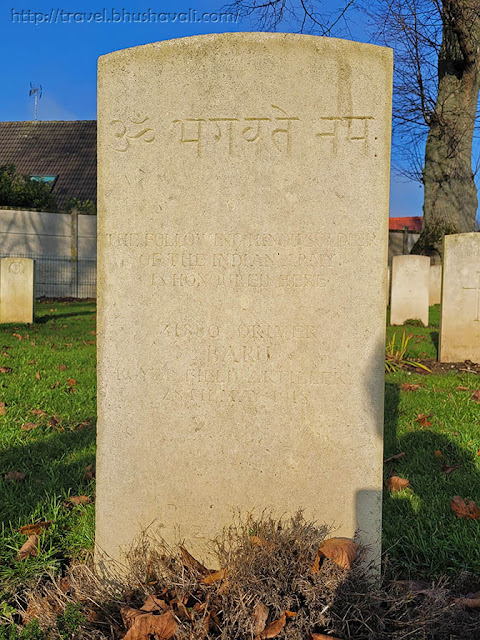



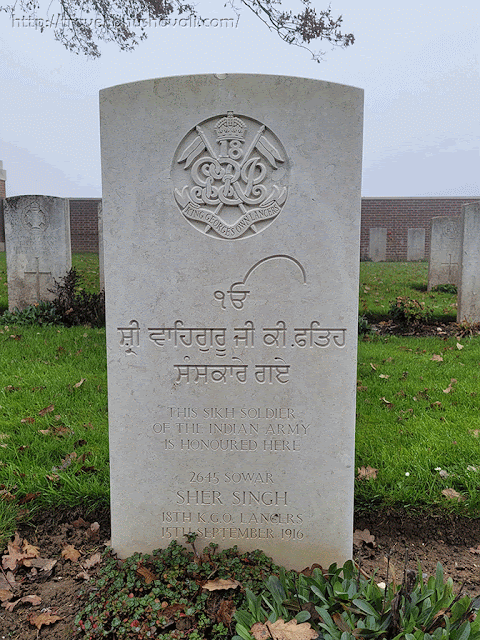



.jpg)



